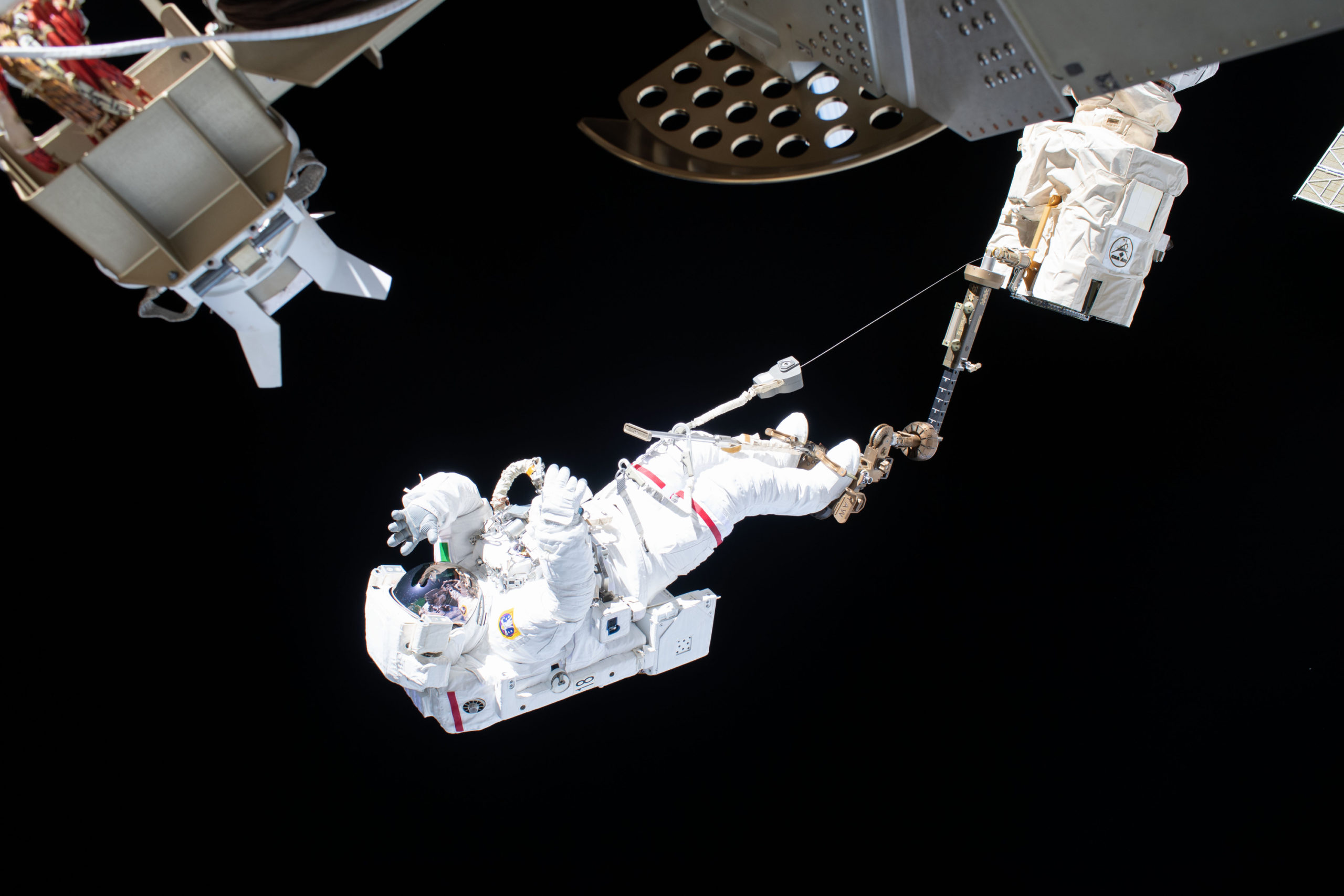
As a species, we are uniquely curious about our origins. In both philosophical and scientific circles, research and debate continue to attempt to understand the origin of the universe and how we got here. Some of that research is being conducted by Dr. Samuel Ting and his team, with equipment on the International Space Station—but the equipment was experiencing issues. A new series from Disney+, “Among the Stars” shares the challenges and triumphs of astronauts on the Expedition 63 mission and their efforts to make the repairs.
“Among the Stars” is a 6-part docuseries with unprecedented, behind-the-scenes access to world of NASA. The series follows a team of astronauts—including Expedition 63 Commander Chris Cassidy—as they embark on a six-and-a-half-month mission to the International Space Station. The series features cameras on both Earth and the International Space Station to reveal intimate footage, personal video diaries and livestream footage that embeds viewers with an up close and personal view of the mission, and a front row seat as the crew risks life, limb, and reputation to make repairs to Dr. Ting’s equipment.
Dr. Samuel Ting
I am automatically a huge fan of Dr. Samuel Ting based solely on the fact that he was born in Ann Arbor, Michigan, and earned his Bachelor of Science in Engineering degrees in physics and mathematics, as well as his Ph.D. in physics from the University of Michigan. Go Blue!
Beyond that, though, Dr. Ting is an exceptional individual even if you aren’t a Wolverines fan. He is a Nobel Laureate in physics, and is currently the Thomas Dudley Cabot Institute professor of physics at the Massachusetts Institute of Technology (MIT).
He is also the founder and leader of the Alpha Magnetic Spectrometer (AMS) experiment aboard the International Space Station. The results from this experiment are changing our understanding of the cosmos.
Searching for Dark Matter
NASA describes the AMS experiment:
The AMS-02 experiment is a state-of-the-art particle physics detector that is constructed, tested and operated by an international team composed of 56 institutes from 16 countries and organized under United States Department of Energy (DOE) sponsorship. The JSC AMS project office oversaw the overall payload integration activities and ensured that the payload is safe and ready for launch on the Space Shuttle and continues to be safe since its deployment onto the ISS. The AMS Experiment uses the unique environment of space to advance knowledge of the universe and lead to the understanding of the universe’s origin. AMS was launched on Space Shuttle Endeavour on May 16, 2011.
According to NASA, as of May 8, 2017, the AMS had measured 100 Billion particles.
Issues with AMS
I spoke to Dr. Ting about the experiment and the issues with the equipment that play a central role in the “Among the Stars” docuseries.
“It is a precision magnetic spectrometer. Inside it has 200,000 channels of silicon detectors that monitor the coordinates of a particle to 5 microns. Five microns is similar to a single hair,” explained Dr. Ting. “To keep this resolution, you need to keep the temperature constant. But, the outside temperature changes quickly—we orbit around the Earth every 93 minutes. So, we have a cooling system with liquid CO2 that goes through the amplifiers of the electronics and absorbs the heat and then becomes gas—so you have phase transition.”
“To move the CO2 we have four pumps. We only need one, but we installed four. In February 2014, suddenly one pump stopped. They are guaranteed for three years—and then right at three years I saw it fail,” continued Dr. Ting. “I was thinking, ‘This is not a good sign. If one is out, what might happen with the other three?’ So, I told NASA we should change the pump.”
It was not easy sell. Dr. Ting said NASA pushed back—noting that it is an extremely difficult repair. The pump is connected with eight connections flowing with liquid CO2 and at 30 atmosphere. To cut them in space is nearly impossible.
Dr. Ting stressed the value of the quantum physics data they will get if the AMS continues working. NASA agreed to find a way to do it. It took four years and thousands of people to develop the tools to fix the pump. He told me that it is like trying to do a heart transplant—they have to cut the eight lines and put in a new system.
Continuing the Experiment
You will have to watch “Among the Stars” to understand the urgency and the challenges behind these repairs. Now that the repairs have been made, the AMS experiment continues.
What will they find? Nobody knows for sure.
“So far, everything we have collected was not predicted,” proclaimed Dr. Ting. It will open a new field provided with new knowledge. I was told by NASA that the space station will be around for 10 more years. Since the result of the first 10 years was mot predicted, I better not say anything about the next 10 years.”
All episodes of “Among the Stars” are available to stream on Disney+ starting today.

Leave a Reply